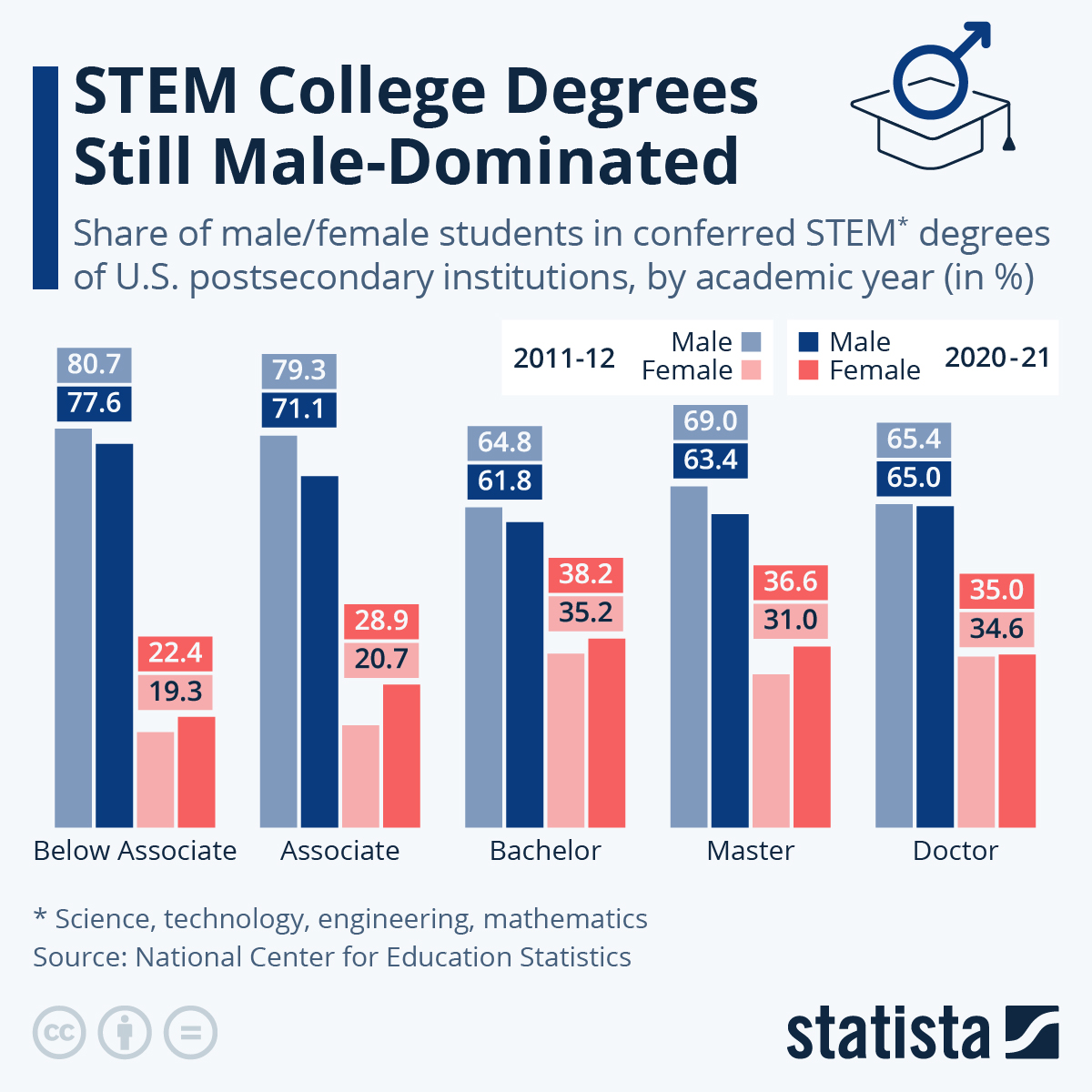
Over the past decades, progress towards gender parity in varying societal and economic contexts has advanced, albeit slowly in some places.
While, for example, literacy in females has caught up to that of their male counterparts since the 1970s, Statista's Florian Zandt notes that many scientific fields are still heavily male-dominated. This is especially true for STEM jobs.
Statista's chart, based on data from the National Center for Education Statistics, shows that progress towards a more equal distribution of conferred degrees in science, technology, engineering and mathematics was barely achieved over the past ten years.
You will find more infographics at Statista
In the academic year ending in 2021, more than 60 percent of all bachelor's, master's and doctorate degrees in United States postsecondary education institutions were awarded to men. The share distribution is even more tilted towards males for tertiary education below or at associate's degrees. The former are comprised of certificates not necessarily leading to an undergraduate degree, while the latter are typically awarded after completing community college or similar institutions. Here, 71 percent of degree holders in the academic year of 2020-21 were male. Still, associate degrees saw the most substantial shift towards a more equitable distribution over the past ten years, while the share of doctorate degrees awarded to females in STEM studies remained virtually the same.
Overall, around 800,000 STEM degrees were conferred in the academic year of 2020-21, an increase of 42 percent compared to ten years prior.
In terms of total associate's, bachelor's, master's and doctorate degrees awarded in the United States in 2021, STEM degrees account for around 20 percent.
Over the past decades, progress towards gender parity in varying societal and economic contexts has advanced, albeit slowly in some places.
While, for example, literacy in females has caught up to that of their male counterparts since the 1970s, Statista’s Florian Zandt notes that many scientific fields are still heavily male-dominated. This is especially true for STEM jobs.
Statista’s chart, based on data from the National Center for Education Statistics, shows that progress towards a more equal distribution of conferred degrees in science, technology, engineering and mathematics was barely achieved over the past ten years.
You will find more infographics at Statista
In the academic year ending in 2021, more than 60 percent of all bachelor’s, master’s and doctorate degrees in United States postsecondary education institutions were awarded to men. The share distribution is even more tilted towards males for tertiary education below or at associate’s degrees. The former are comprised of certificates not necessarily leading to an undergraduate degree, while the latter are typically awarded after completing community college or similar institutions. Here, 71 percent of degree holders in the academic year of 2020-21 were male. Still, associate degrees saw the most substantial shift towards a more equitable distribution over the past ten years, while the share of doctorate degrees awarded to females in STEM studies remained virtually the same.
Overall, around 800,000 STEM degrees were conferred in the academic year of 2020-21, an increase of 42 percent compared to ten years prior.
In terms of total associate’s, bachelor’s, master’s and doctorate degrees awarded in the United States in 2021, STEM degrees account for around 20 percent.
Loading…





